Beauty masks one of nature’s deadliest weapons.
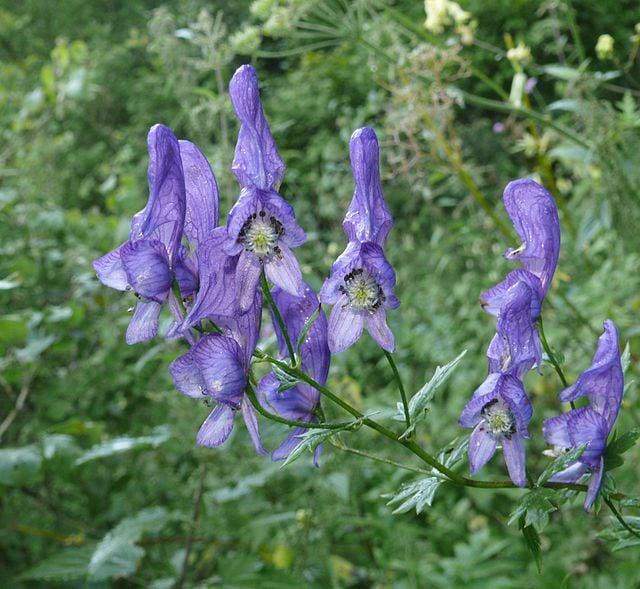
Standing in gardens across the world, a gorgeous purple bloom hides a secret that has claimed lives for centuries. Aconite, commonly known as monkshood or wolfsbane, presents itself as an innocent addition to any flower bed with its deep violet petals arranged in helmet-like formations. Throughout the United States, native species thrive from the Appalachian Mountains of North Carolina, Virginia, and Tennessee to the rocky cliffs of New York’s Catskill Mountains, the Midwest regions of Ohio, Wisconsin, and Iowa, and the remote wilderness areas of Alaska.
What gardeners and hikers don’t realize is that this botanical beauty contains enough toxic alkaloids to kill an adult human within hours of contact. Native populations flourish in moist woodland areas, streamside locations, and alpine meadows where outdoor enthusiasts frequently venture, making accidental encounters with this “queen of poisons” a real possibility for anyone exploring America’s natural landscapes.
1. Ancient assassins chose this flower above all other poisons.
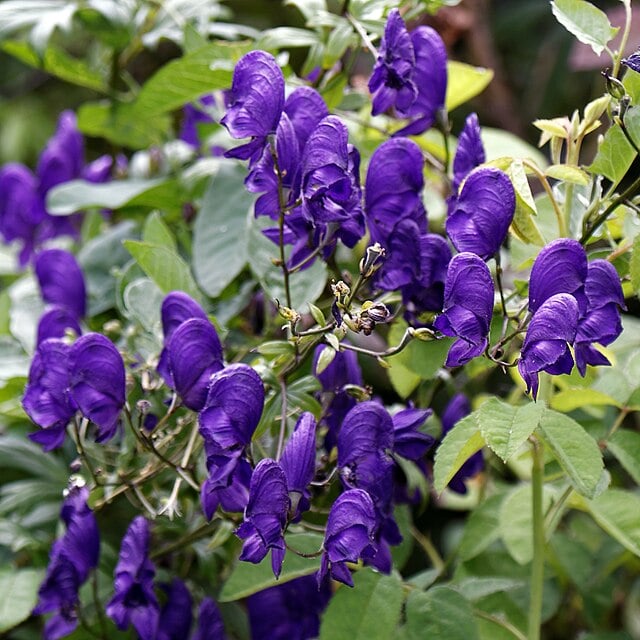
Throughout history, political murders often involved aconite’s lethal embrace rather than swords or daggers. The plant’s alkaloids work so efficiently that even tiny amounts absorbed through skin contact can prove fatal. According to historical records from the University of Edinburgh’s poison research archives, Roman conspirators frequently used aconite-laced wine to eliminate their enemies because the symptoms mimicked natural heart failure.
Greek mythology tells us that Medea attempted to poison Theseus with aconite before Aegeus recognized his son. This wasn’t mere storytelling convenience – ancient civilizations understood the plant’s devastating potential long before modern science could explain the mechanism.
2. Your nervous system shuts down in a predictable cascade of failures.

Within minutes of exposure, aconite’s alkaloids begin their systematic assault on your body’s electrical grid. The compounds target sodium channels in nerve cells, essentially jamming the signals that keep your heart beating and lungs breathing. Modern toxicology studies reveal that cardiac arrhythmias typically begin within 10-20 minutes of ingestion, as reported by the Journal of Emergency Medicine.
Victims often remain conscious during the early stages, experiencing a terrifying awareness as their body betrays them. Numbness spreads from the point of contact while the heart struggles against increasingly erratic electrical impulses.
3. Hospitals struggle to reverse the damage once symptoms appear.

Emergency rooms face a nearly impossible challenge when aconite poisoning arrives through their doors. No specific antidote exists for this particular botanical toxin, leaving medical teams to fight symptoms rather than the underlying cause. Research published in Clinical Toxicology indicates that supportive care focusing on cardiac monitoring and respiratory support offers the only hope for survival.
Even with immediate medical intervention, the mortality rate remains devastatingly high. The alkaloids bind so tightly to cellular targets that standard treatments often prove ineffective against the plant’s chemical assault.
4. Foraging mistakes turn deadly when people confuse aconite with edible plants.
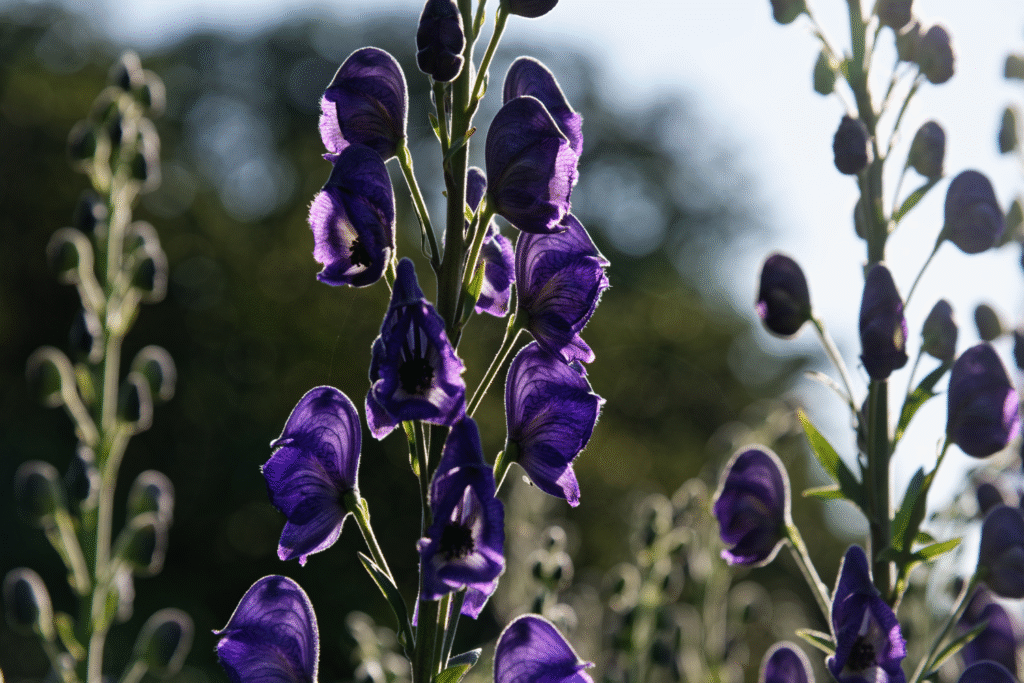
Wild food enthusiasts occasionally mistake young aconite shoots for harmless vegetables like wild garlic or horseradish. The confusion proves fatal because both plants share similar early-season appearance and habitat preferences. Professional foragers know to avoid any purple-flowered plant in the buttercup family, but casual hikers lack this crucial knowledge.
Spring emergence patterns make identification particularly challenging since aconite’s distinctive helmet-shaped flowers haven’t yet developed. The leaves alone provide insufficient visual cues for safe identification, leading to accidental poisonings each year.
5. Gardeners face hidden dangers from routine maintenance tasks.

Pruning, deadheading, or transplanting aconite releases plant juices that penetrate skin through microscopic cuts and abrasions. Many gardeners work barehanded around ornamental plantings without realizing the risk lurking beneath their fingernails. Absorption happens so gradually that symptoms may not appear until hours after garden work concludes.
Professional landscapers recommend treating all aconite varieties as hazardous materials requiring gloves, long sleeves, and immediate hand washing. Even dried plant material retains its toxic properties, making cleanup operations particularly treacherous.
6. Modern forensic science can detect aconite poisoning years after death.

Advanced chemical analysis techniques allow investigators to identify aconite alkaloids in tissue samples long after traditional toxicology screens would prove useless. The compounds bind to proteins in ways that create lasting molecular fingerprints throughout the victim’s organs. Forensic laboratories now routinely test for aconitine in suspected poisoning cases involving unexplained cardiac events.
Cold case investigations have reopened after new testing revealed aconite involvement in deaths previously attributed to natural causes. The plant’s reputation for mimicking heart attacks made it an attractive choice for historical poisoners.
7. Wildlife evolved sophisticated strategies to avoid this botanical trap.
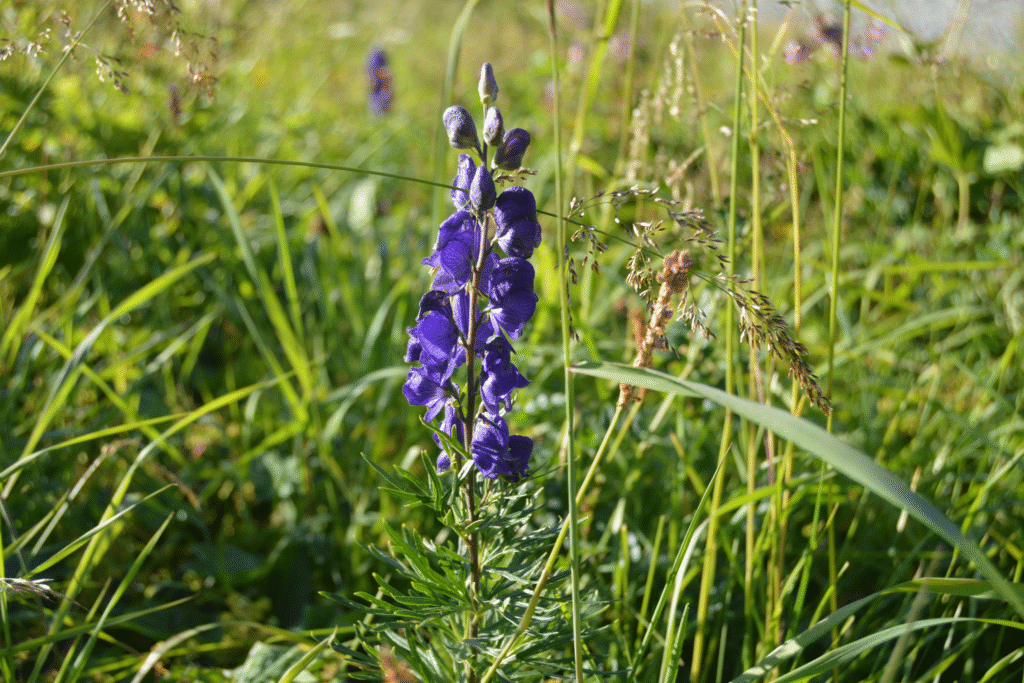
Most mammals instinctively avoid aconite plants despite their attractive appearance and sweet nectar production. Deer, rabbits, and other herbivores demonstrate remarkable selectivity when grazing, consistently bypassing aconite in favor of surrounding vegetation. Their survival depends on recognizing chemical warning signals that human senses cannot detect.
Bees represent a notable exception to this avoidance pattern, collecting aconite nectar without apparent harm. Scientists theorize that their smaller body mass and rapid metabolism allow them to process the alkaloids before reaching lethal concentrations.
8. Traditional medicine practices still employ controlled aconite preparations.
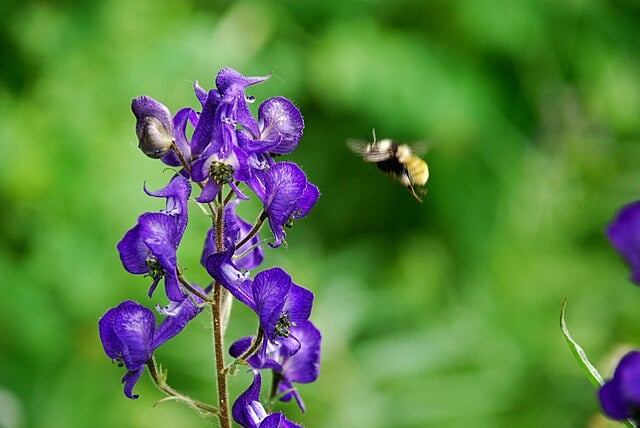
Chinese traditional medicine has used processed aconite root for thousands of years despite understanding its deadly potential. Careful preparation methods involving multiple boiling cycles reduce alkaloid concentrations to theoretically therapeutic levels. Modern practitioners exercise extreme caution when working with these preparations, recognizing that the margin between medicine and poison remains razor-thin.
Western herbalism has largely abandoned aconite use due to its unpredictable potency and lack of standardization. The risk-benefit calculation simply doesn’t support continued therapeutic applications when safer alternatives exist.
9. Climate change may be concentrating the plant’s toxic compounds.
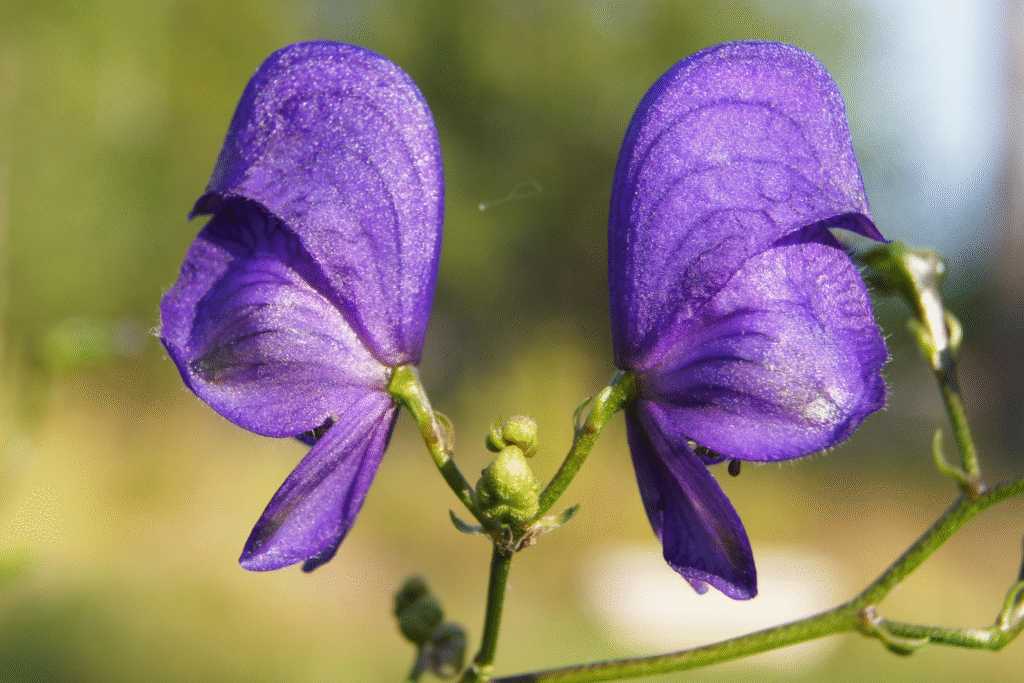
Rising temperatures and shifting precipitation patterns appear to influence alkaloid production in wild aconite populations. Plants stressed by environmental changes often increase defensive compound synthesis, potentially making already dangerous specimens even more lethal. Research into climate-toxicity relationships remains limited, but preliminary studies suggest concerning trends.
Mountain populations show particular vulnerability as alpine conditions change rapidly. The plants that once served as natural barriers against grazing animals may now pose unprecedented risks to human populations exploring these regions.
10. Recognition training could save lives in emergency situations.

Medical professionals increasingly advocate for improved aconite identification education among outdoor enthusiasts and emergency responders. Quick recognition of the plant’s distinctive characteristics enables faster diagnosis when poisoning occurs. Training programs focus on the helmet-shaped flower structure and the plant’s preference for moist, mountainous terrain.
Emergency protocols now emphasize immediate decontamination procedures for suspected aconite exposure. While treatment options remain limited, rapid response can sometimes prevent fatal outcomes through aggressive supportive care and cardiac monitoring.
